8 Sit-Up Alternatives to Round Out Your Abs Routine
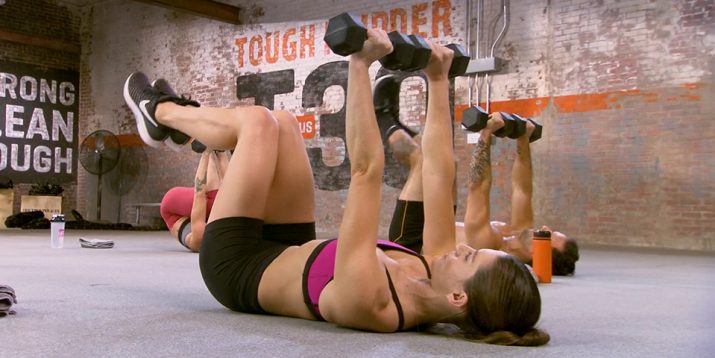
If you want a strong, healthy core, cranking through a few sets of sit-ups isn’t gonna cut it. You need to incorporate a variety of sit-up alternatives into your fitness routine.
It’s not that the traditional sit-up is bad, explains Mary Beth Rockwell, C.P.T., C.E.S. “Sit-ups primarily target just the rectus abdominis (the ‘six-pack’ area) and short-change other parts of the core,” she says.
Plus, it’s easy to do sit-ups incorrectly. “Using momentum to fling yourself up, or what I call ‘chicken winging’ with your arms, can make the move less effective or possibly even injure you,” Rockwell says.
So, if you’re going to do sit-ups, take your time. Maintain proper breathing mechanics (exhale on the effort) and contract your abdominal muscles as you sit up. And be sure to balance your core-strengthening workouts with these sit-up alternatives.
1. Plank
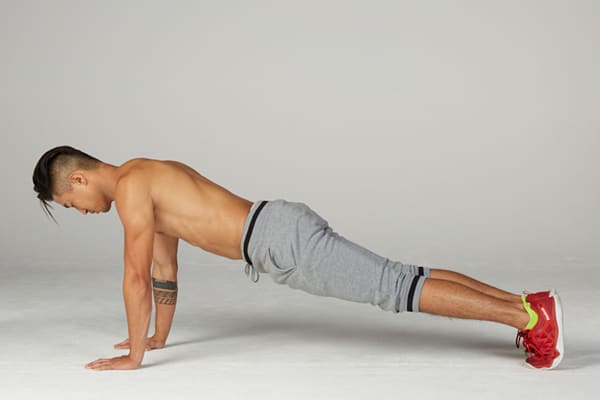
Pilates instructor Nicole De Souza describes the plank as one of the best sit-up alternatives you can do to strengthen your entire body, not just your core.
“Executed properly, the plank activates all the core muscles at once and strengthens the upper back, shoulders, chest, legs, and booty. It will also help improve posture,” she says. “Because there are so many variations with modifications and advancements, this amazing bodyweight exercise can be done by almost anyone, anywhere!”
- Assume a push-up position: feet together (or apart to make the move easier), core braced, body straight from head to heels, hands in line stacked directly underneath your shoulders.
- Pull your shoulders away from your ears (toward your feet), and engage the lats.
- Squeeze your glutes and brace your core to keep your hips from sagging. Your body should form a straight line from your head to your heels.
- Use your core to stabilize your body for the specified amount of time.
2. Plank Jack
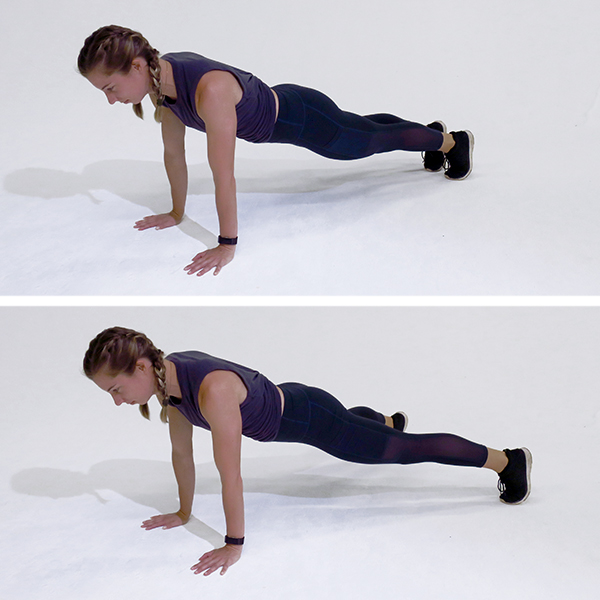
Make sure you’ve nailed the traditional plank before you attempt this sit-up alternative, as it’s more difficult to maintain proper plank form once you add movement.
“Keys to doing these well include pulling your shoulder blades flat down your back to stabilize them, contracting your glutes, keeping your hips in line with your ears and shoulders as much as possible, and landing softly on the balls of your feet rather than on your toes, which can be downright uncomfortable,” Rockwell says.
- Assume a plank position. (See above.)
- Jump your feet apart so that they’re just beyond shoulder width.
- Pause, then jump your feet back to the starting position.
- Continue to jump the feet apart and together, so that the body remains in that straight line.
3. Mountain Climbers
This sit-up alternative does double duty, explains De Souza. “Mountain climbers are one of my favorite exercises. They’re a great way to add cardio to your core workout to get the heart rate up and to burn some calories!”
- Assume a push-up position: feet together (or slightly apart to make the move easier), core braced, body straight from head to heels, hands in line with wrists stacked directly underneath the shoulders.
- Lift your right foot off the floor and draw your right knee toward your chest, making sure to keep your back flat, your butt down, and the rest of your body stationary. Tap the floor with your toes.
- Return your right foot to the starting position, and immediately draw your left knee to your chest. Tap the floor with your toes.
- Continue alternating legs, performing equal reps on both sides.
4. Reverse Crunch
You can calibrate the difficulty of this sit-up alternative by bending or straightening your legs, says Rockwell. “Performing the move with straight legs is tougher because you have a longer lever to control. Going with bent knees is a perfectly viable modification.”
- Lie on your back with your legs bent and feet flat on the ground a few inches from your butt. Place your hands just lower than your lower back (grazing top of the tailbone) for support.
- Engage your core and lift your feet off the ground keeping the knees at 90 degrees, so your shins are parallel to the ground. Keep your low back pressed into your hands.
- Reverse the motion and tap your feet back on the ground.
- Continue to raise and lower your legs for the specified amount of time.
5. V Sit-Up
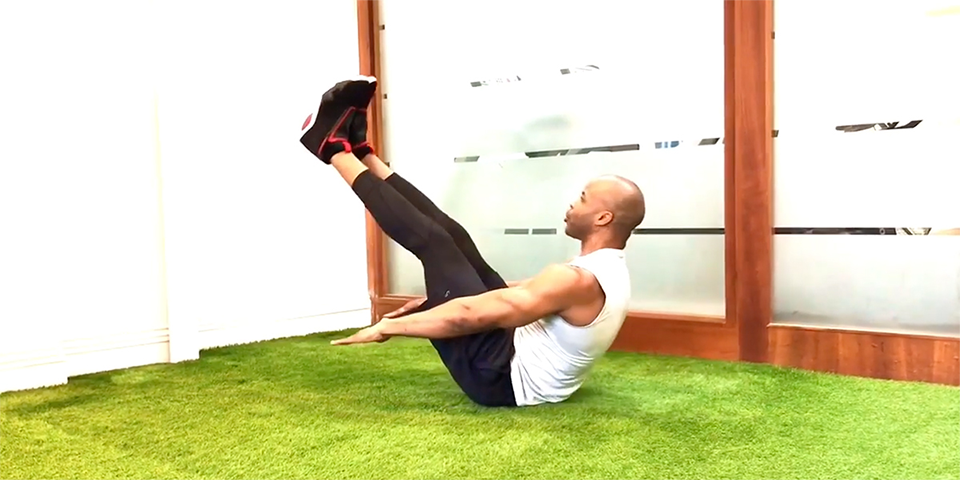
The V sit-up, aka the jackknife, is a very advanced sit-up alternative, says Rockwell. “Keeping a long, flat spine and bracing the core is everything. Slouching through V sit-ups can be torture for your low back over time.” If you’re new to this sit-up alternative, keep your knees bent and both sets of toes on the floor.
- Lie on your back with your legs straight and arms extended over your head.
- Keeping your back neutral and your core engaged, lift your legs and arms off the floor until your body forms a V shape. You can reach your arms straight forward or up toward your feet.
- Pause, and then slowly lower your arms and legs back to the starting position.
- Repeat, avoiding the use of momentum as you move into each rep.
6. Windshield Wipers
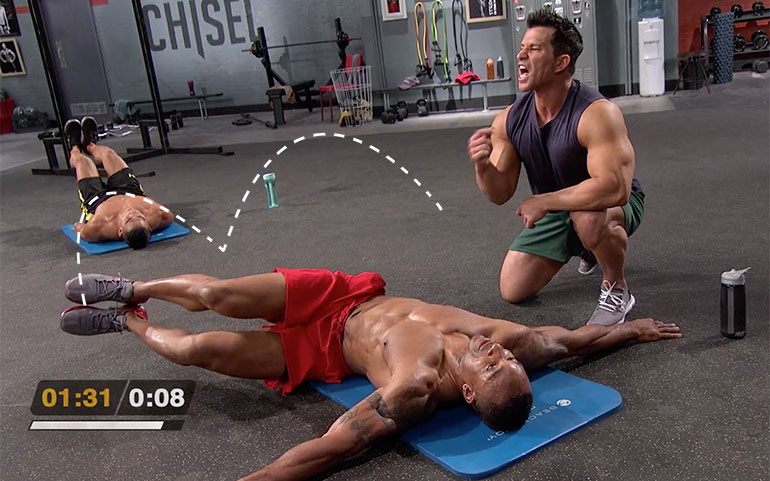
Windshield wipers are another sit-up alternative for which leg positioning matters. “Straight legs are more challenging than the bent-knee version, so choose the one that you can do with the best possible form,” says Rockwell. That includes keeping the lower back and both shoulders in contact with the floor.
- Lie flat on your back with your arms extended out to your sides. Keeping your legs together, bend at your knees to form a 90-degree angle, and lift the legs so your shins are parallel to the floor. Make sure knees are stacked over hips.
- Engage your core, so your back is pressed flat into the ground.
- As you exhale, drop your knees to the right, keeping your legs together. Don’t drop them so far that your shoulders come off the ground.
- Return to center on an inhale and repeat on the left side on your next exhale.
- Perform an equal number of reps on each side.
7. Hollow Hold
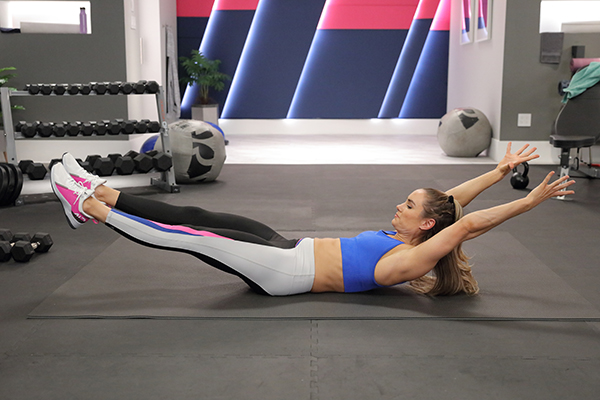
“The Hollow Hold is a great sit-up alternative, as it can be adjusted to every level of fitness,” says De Souza. “The arms and legs act as levers, and the further you take them away from your center, the harder the exercise becomes.”
- Lie on your back with your arms and legs lifted straight up toward the ceiling.
- Engage your core, press your lower back into the floor, and slowly begin to lower your legs down and your arms back. Lower your legs as far as you possibly can without your lower back coming off the floor, aiming for a “hollow” position that resembles a boat.
- Avoid letting your lower back lift off the floor. If it does, return to your starting position and don’t drop quite as far.
- Hold the position for the specified amount of time.
8. Scissor Kicks
This sit-up alternative targets the lower abdominal muscles as well as the hips and thighs. But, done incorrectly, scissor kicks can do a number on your lower back. “If your back doesn’t feel right, just lift the legs up a bit higher to take some of the load off,” Rockwell says.
- Lie on your back with your arms down by your sides.
- Lift both of your legs a few inches off the ground and separate them slightly into a “V” shape. Engage your core and press your lower back into the floor.
- Keeping both legs straight, bring your legs together and cross your right leg over the left. Widen your legs into a “V” again, and then bring your legs together again, this time crossing your left leg over the right.
- Continue alternating until you’ve completed all reps.
- Always keep your lower back pressed into the floor. If it starts to arch, lift your legs up to reduce tension on your core.
